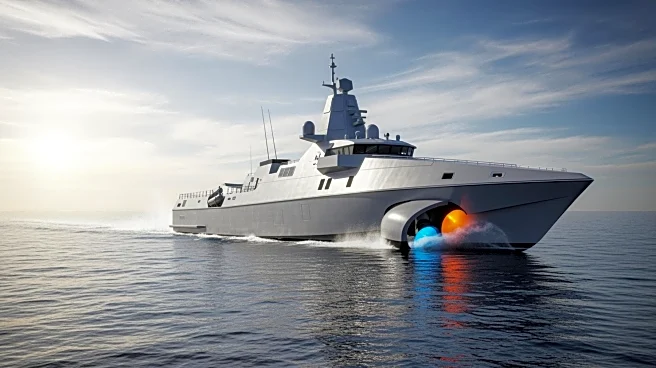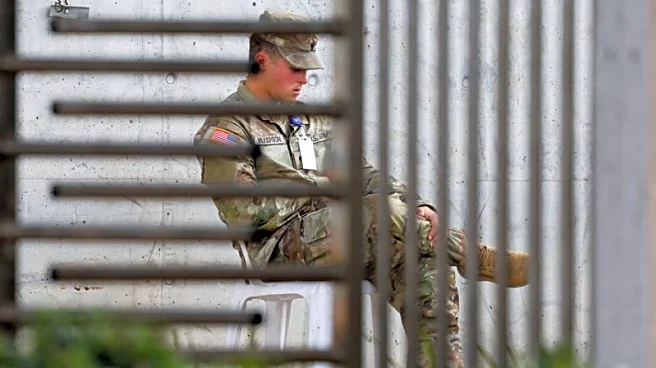What's Happening?
The Indonesian Navy has officially commissioned its first waterjet-propelled KCR-60M fast attack craft, named KRI Belati, with the pennant number 622. The induction ceremony took place on October 24, 2025, at the Indonesian Navy's Military Sealift Command
headquarters in Jakarta. This vessel marks a significant milestone as it is the first of its kind built by PT Tesco Indomaritim, a privately owned Indonesian shipbuilder, rather than the state-owned PT PAL, which constructed the previous six KCR-60M vessels. The KRI Belati features advanced propulsion systems, including a single fixed propeller and two Hamilton HT900 waterjets, powered by MTU diesel engines, allowing it to achieve a top speed of 35 knots, an improvement over the existing fleet's 28 knots.
Why It's Important?
The commissioning of the KRI Belati represents a strategic enhancement of Indonesia's naval capabilities, particularly in terms of speed and maneuverability. This development is crucial for maintaining maritime security in the region, given Indonesia's vast archipelagic geography. The introduction of a privately built vessel into the fleet also signifies a shift towards diversifying the country's defense manufacturing base, potentially fostering competition and innovation within the domestic shipbuilding industry. The enhanced speed and armament of the KRI Belati, including a Leonardo Oto Marlin 40 mm gun and Roketsan Atmaca anti-ship missiles, bolster Indonesia's ability to protect its maritime interests and respond to regional threats.
What's Next?
Following the commissioning of the KRI Belati, the Indonesian Navy may continue to explore further collaborations with private shipbuilders to expand and modernize its fleet. This could lead to increased investment in domestic shipbuilding capabilities and technology transfer agreements. Additionally, the successful integration of the KRI Belati into active service could prompt the Indonesian Ministry of Defence to consider similar upgrades for other vessels in its fleet, enhancing overall operational readiness and strategic deterrence.














